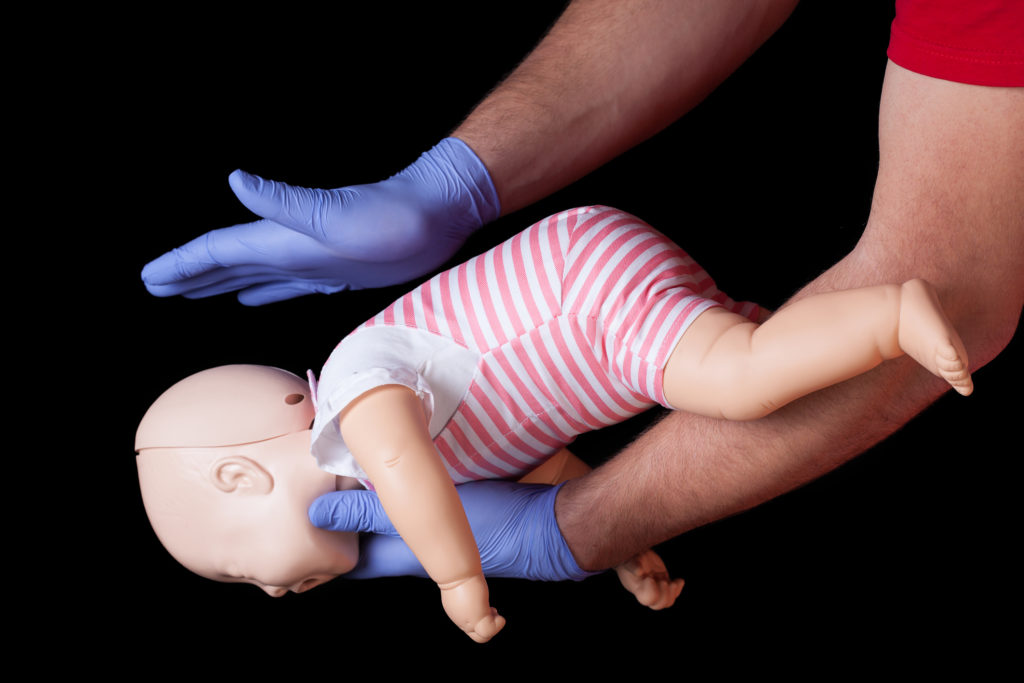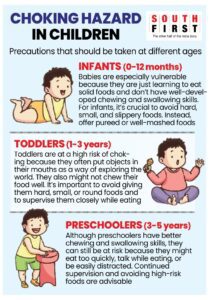It is important to know first aid and choking prevention techniques, especially if you live/work with children.

Not just babies and toddlers, children aged 5 and above can also choke. (iStock)
In a heart-wrenching incident, an 18-month-old toddler died after choking on a piece of “murukku”. This unfortunate incident shines light on the need for food safety and awareness of choking hazards in young children.
According to reports, the incident occurred on Friday, 1 December, in Mavelikkara, Alappuzha. The child, Vaishnav, was reportedly chewing on a piece of murukku without his parent’s knowledge. He choked on it and could not breathe. Despite being rushing to the hospital, the doctors were unfortunately unable to save him.

Click to enlarge.
Choking is a leading cause of injury and death in children, particularly those under the age of four. A study published in 2022 says, “Choking occurs in 80 percent of under three-year-old children worldwide.”
Agreeing with this, Dr R Selvan, renowned paediatrician from Erode, Tamil Nadu, tells South First, “Young children have smaller airways and less developed chewing and swallowing abilities. This makes them particularly susceptible to choking on foods that are hard, large, or have a tricky texture.”
In light of this tragedy, health professionals are urging parents and caregivers to be vigilant about the foods they offer to young children and what is kept within their reach.
While doctors insist that age 0-3 is the most dangerous period and these children have a higher risk of choking on certain foods, they also add that choking can happen in older children as well.
Dr Sanjay Gururaj of Shanthi Hospital and Research Center tells South First, “It is not necessary that children choke only between the age of 0 and 3 years, they can choke when they are five and above too. There are cases of children choking over candy, chocolates, and sometimes noodles too, and dying.”
Dr Selvan adds that high-risk foods include not only “murukku” but also nuts, grapes, popcorn, and raw carrots. These foods can easily become lodged in a child’s throat, leading to a potentially fatal situation. He says that it is better to avoid giving these foods to children below 3 years of age.
Meanwhile, Dr Sivaranjani Santosh, renowned paediatrician from Telangana, tells South First that even fruits like grapes and strawberries need to be cut into small pieces before being given to toddlers. Peanuts and other nuts could also be dangerous and they could choke on these.
“Several times, force feeding and hurried eating can also end up in aspiration. Children can even choke while breastfeeding and parents need to be aware of this,” doctors say.
Dr Sivaranjani says that supervision is the key. “Always supervise young children while they are eating,” she advices.
Also, avoid giving young children hard, large, or slippery foods that can easily cause choking. It is also imperative to ensure that it is not available everywhere in the house as children have a tendency to put things in their mouth.
She advocates for parents and caregivers educating themselves on first aid and choking prevention techniques. If you suspect your baby of choking, first observe. If the baby is trying to cough and it is effective, do not interfere. Let the baby cough out the foreign body.
But if the baby is not crying, not coughing, it means that the foreign body is stuck in the wind pipe. And if the baby doesn’t get air into their lungs, it can lead to death. Immediate first aid is required in this situation:
Hold the baby in such a way that the palm supports the baby’s chest and jaw is well supported without pressing the baby’s neck. The baby should be leaning slightly downwards.

Jul 26, 2024

Jul 26, 2024

Jul 26, 2024

Jul 26, 2024

Jul 26, 2024

Jul 26, 2024